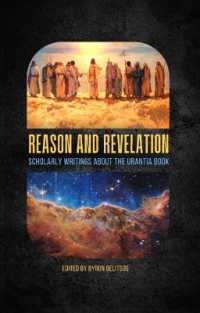Full Description
What happens when Chicanx students' educational experiences are shaped by the activation of ancestral worlds? Born of songs like La Bamba, oral traditions, call and response practices, body as an instrument, and embodying ecologies, the authors posit son jarocho fandango (SJF) methodologies as a tool of convivencia/conviviality, communal healing, positive identity formation, and agency. Against the backdrop of white settler colonialism, members of the intergenerational Son Xinachtli Collective formed across two U.S.--Mexican border states and two ethnic studies university courses. The Collective follows the tradition of the SJF decolonial movement, positioning SJF as an ancestral elder of the African diasporic, Mexican Indigenous, Spanish, and Arabic traditions--whose threat of extinction sparked a cultural revitalization. The survival of SJF and its ancestral worlds supersedes the ruptures of colonialism. From ethnic studies classroom practices to organizing SJF in the community, this work highlights the possibilities of nurturing co-liberation.
Book Features:
Offers an historical and contemporary example of culturally sustaining practices embraced by Chicanx and Indigenous communities.
Focuses on son jarocho fandango as a pedagogy and methodology in schools, not just an art form.
Shows how culturally sustaining pedagogy works in a postsecondary setting to center ethnic and cultural practices within the curriculum.
Interweaves student learning, ethnic studies pedagogies, teacher education, curriculum development, and civic engagement.
Includes visuals that provide the aesthetic of experiencing the son jarocho fandango movement.
Contents
Contents
Foreword Martha González xiii
Series Foreword Django Paris xv
Preface Lirio Patton xix
With Deep Gratitude xxiii
Prólogo: El fandango jarocho como herramienta pedagógica xxvii
Por Gilberto Gutiérrez Silva y Gisela Farías Luna
1. Winding Into the Fandango Vortex 1
Envisioning Son Caracol 2
Note to the Reader 7
Culturally Decolonizing Pedagogy 7
Organization of the Book 13
2. Grounding an Understanding of Son Jarocho Fandango Pedagogy 15
Theoretically Grounding Application of Son Jarocho Fandango as a Culturally Decolonizing Pedagogy 16
Experiencing SJF's Ontological Structures 28
Son Caracol Taking Root 33
Student Body at Cucunuchi University, a Brief Overview 36
Ethnic Studies Son Jarocho Fandango Students—Blossoms 38
3. A Call-and-Response Approach to Activating Ancestral Worlds in the Classroom 39
Introducing ETHS 4975 Afro-Mexican Indigenous Cultural Practice, Fall 2019 and Spring 2020 44
Circling Up With Students as Knowledge Keepers and (Emerging) Experts 47
Entering the Portal of Son Jarocho Fandango Ecologies and Possibilities 47
Collective Agency Toward Co-Liberation 76
Son Caracol Community Agreements 77
La Peña Cultural Center (2019) 79
Annual Indigenous Peoples Day Event—Indigenous Students in Activism (ISA) 80
Lessons On Institutionalizing Son Jarocho Fandango Practice at a Public University 84
4. Student-Led Co-Liberation Qualities of the Son Jarocho Fandango Movement 87
Student-Led Fandanguitos 88
Communities Engaged in Son Jarocho Fandango as a Decolonial Praxis 116
5. Trans-Bordering, Transgressive, Transformative Aspirations 119
Overview 119
Conclusion: Winding Down the Written Fandango 132
Appendix A: Son Jarocho Instruments 137
Appendix B: Methodological Notes: Son Jarocho Fandango as Method 139
Appendix C: Maestra Angela Flores on Teaching Son Jarocho: Honoring and Creating Relationships With Indigenous Musicians of Son Jarocho 147
Angela Flores
Appendix D: Son Caracol Members' Connection to SJF and This Project 151
Appendix E: Key and Recurring Terms 153
References 155
Index 165
About the Authors 171






